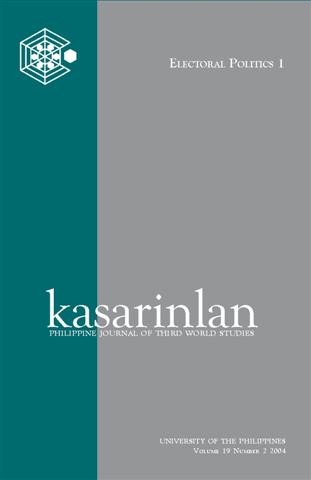Indian Elections 2004: A Retrospective Analysis and Overview
Abstract
Elections at best reflect three dimensions of formal democracy—representation in terms of representing the political will of the people; integration in terms of social classes and groups largely done through political parties, which represents the stabilising aspect of democracy; and decisions generated from stable majorities through coalitions or a single party to ensure “majorities” within parliaments and their governability. In many societies democracy can be and has been subverted in all three dimensions. Electoral results and their reflections on democracy, at best, can be tendential statements of what the results reveal.
Published
2007-11-17
How to Cite
SURENDRA, Lawrence.
Indian Elections 2004: A Retrospective Analysis and Overview.
Kasarinlan: Philippine Journal of Third World Studies, [S.l.], v. 19, n. 2, p. 75-91, nov. 2007.
ISSN 2012-080X.
Available at: <https://www.journals.upd.edu.ph/index.php/kasarinlan/article/view/474>. Date accessed: 04 aug. 2025.
Section
Articles
Keywords
India; elections; liberal democracy
By submitting a manuscript, the authors agree that the exclusive rights to reproduce and distribute the article have been given to the Third World Studies Center.



